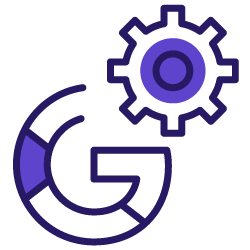What is MUM (Multitask Unified Mode)? How does it work? What are the goals? In this post, I will introduce you to the world of this new technology based on the artificial intelligence of Google. How will SEO change in the future?
Definition of MUM (Multitask Unified Model)
MUM, an acronym for Multitask Unified Model, is a new technology from Google to understand better search queries that users make on the search engine, even when they use precise and articulated words or phrases.
The aim is to reduce the number of questions needed to reach the answer, give users more performing and more satisfying results and develop a more comprehensive understanding of information and world knowledge than previous models.
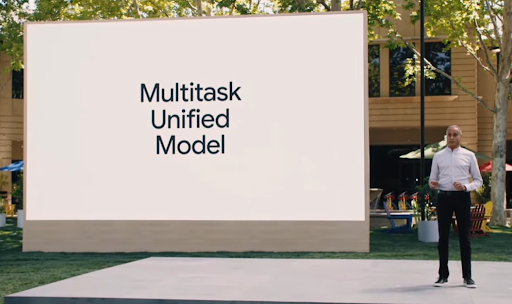
Prabhakar Raghavan, Senior Vice President at Google, presents MUM on the stage of Google I/O 2021.
Google gives this definition of MUM:
“New technology Google is exploring internally to better understand language & make it easier to get helpful responses to complex Search needs”.
Google I/O 2021#google #googleio #googleio2021 #LaMDA #languagemodelfordialogueapplications #openendeddailogue #autodelete #TPUv4 #tensorprocessingunits #tpuv4pods #4096chips #quantumcomputing #quantumtechnology #googlesearch #mum #multitaskunifiedmodel #Android12 pic.twitter.com/h6XF3f3Tb3
— KARRYONUS (@karryonus) May 19, 2021
The technology behind MUM
Now that we have the definition of MUM, let’s see some of its features to better understand the technology beside it.
- MUM is powerful: it uses the T5 text-to-text framework and is based on a Transformer architecture, but it is 1000 times more powerful than BERT (Bidirectional Encoder Representations from Transformers).
- MUM is multilingual: it is able to understand 75 different languages and many different tasks at once, with a more complete understanding than previous models.
- MUM is multimodal: it means that it can understand information from different formats like webpage, text and images but in the future, even from video and audio, simultaneously.

- MUM is sophisticated: it is a technology designed to understand the most complex, precise and articulated search queries, which usually require an average of 8 steps to obtain a complete answer. So, the new artificial intelligence will facilitate the browsing process of users.
Today’s search engines aren’t quite sophisticated enough to answer the way an expert would. But with a new technology called Multitask Unified Model, or MUM, we’re getting closer to helping you with these types of complex needs. So in the future, you’ll need fewer searches to get things done.
Google IO’21 – New In Google Search – LaMDA | Multitask Unified Model – MUM | Does This Change SEO ?
Prabhakar Raghavan, Senior Vice President at Google, Google I/O 2021 – MUM: does This Change SEO ?
What are the benefits of Google MUM
One of the most important benefits of MUM is the possibility to shorten the search session.
On the complex queries, MUM could understand not only the explicit context but even the implicit context and the related queries; furthermore, it could give users information that can be useful.
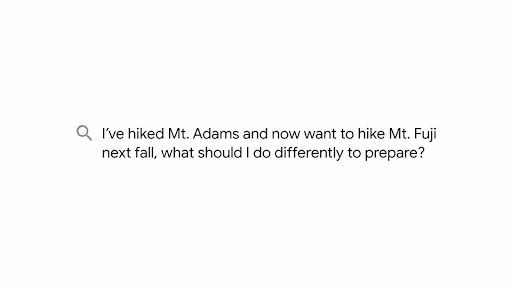
Let’s see an example (the same made by Google): I like to climb mountains and I recently hiked a mountain, Mount Adams. I want to hike Mount Fuji next fall, so I want to know what to do differently to prepare myself for this new experience. Right now, I have to do a lot of searches on the search engine, like:
- the elevation of each mountain;
- the average temperature;
- the difficulty of the hiking trails;
- the right gear to use;
- and so on.
After doing a lot of searches, I manage to obtain all the information I need.
Now, let’s see what can happen with MUM.

MUM could understand what I have done and what I need to do.

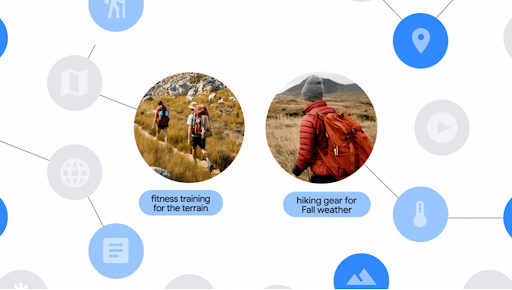
MUM might understand that I am comparing two mountains, guessing that the height and trail information might be relevant.
It could also understand that, in the context of hiking, “preparation” could include aspects such as training, as well as the right equipment. It could also extract related information that is useful and suggest it.
Since MUM can surface insights based on its deep knowledge of the world, it could highlight that while both mountains are roughly the same elevation, fall is the rainy season on Mt. Fuji so you might need a waterproof jacket. MUM could also surface helpful subtopics for deeper exploration — like the top-rated gear or best training exercises — with pointers to helpful articles, videos and images from across the web.
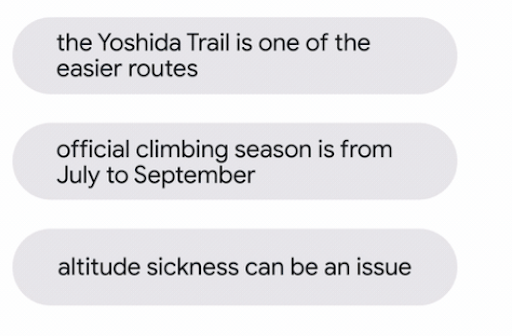
Another important benefit is the removal of language barriers.
Language is a significant barrier to accessing information. MUM can break down these barriers by transferring knowledge regardless of language.
It can “learn” from sources that are not written in the same language as the search query and help users get answers.
Using the same example of Mount Fuji, let’s assume that on the web there is useful information on Mount Fuji written in Japanese; by now, I probably won’t find them by searching in other languages.
MUM could transfer knowledge from sources in all languages and use the information to find the most relevant results in my language.
So in the future, when you’re searching for information about visiting Mt. Fuji, you might see results like where to enjoy the best views of the mountain, onsen in the area and popular souvenir shops — all information more commonly found when searching in Japanese.
[Case Study] Managing Google’s bot crawling
MUM and vaccine research
The first application of MUM is to improve vaccine research.
We all know that often the same concept can be defined with different terms. This can depend on the language, culture or geographic area, or a combination of factors.
During the pandemia, people started looking for information related to COVID-19 on Google, and Google had to learn to identify user expressions to ensure it was providing high-quality information from trusted health authorities (like the World Health Organization).
AstraZeneca, CoronaVac, Moderna, Pfizer, Sputnik, and other vaccines may have different names around the world – over 800, according to Google’s analysis. People looking for information on vaccines can search for, for example “Coronavaccin Pfizer”, “mRNA-1273”, “CoVaccine”, etc.
The ability to correctly identify all names is important to give people results with the latest reliable information, but this operation usually takes a long time (hours or weeks). Thanks to MUM, it was possible to identify over 800 variants of vaccine names in more than 50 languages in a few seconds. With only a small sample of official vaccine names, MUM quickly identified variations between languages.
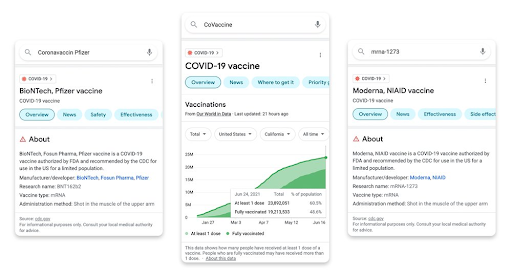
It was a great test to show the potential of the new algorithm. It is easy to think that in the very near future, the new technology of MUM will be able to improve the relevance of user searches in many languages for all the search queries.
Latest news from Search On 2021
Google announced during a live streaming event called Search On some innovations – made possible thanks to artificial intelligence – that we will see in the coming months on the Google products.
The first news is about a new way to search by images and it will be integrated directly into Google Lens. It will allow users to search for something about what they are looking at, not only by making a search based on Google Images, but rather by asking questions about something that has been photographed through Google Lens.
With this new feature, it will be possible to touch the Lens icon when looking at a photo of a t-shirt and ask Google to find the same model or design on another item of clothing, such as socks. This is useful when you are looking for something that may be difficult to describe precisely in words: by combining images and text in a single query, it will be easier to search by images and to ask a precise question.
Another example would be photographing a bird and then asking Lens “what is it eating?” or photograph the chain of a bike and ask “how do I fix it?”
The second news is about the “things you should know”, the related topics that are hidden under a search.
Making an example, if you searched for “acrylic paint”, Google will analyze how users approach this topic and correlate searches with each other, providing up to 350 topics regarding acrylic paint.

For example, you will be able to browse and to discover topics such as “making acrylic paint with household tools”, allowing you to delve into the subject to a much deeper level. You can then “zoom” in or out, going to find out more about where to learn to paint, or various painting methods or famous painters.
The third news is about the videos and the analysis of the video topics.
Google will not only analyze the videos to discover the highlights (such it already does), but now it will provide a new experience that identifies the topics of the video and gives links that allow you to navigate deeper and learn more.
Thanks to MUM, related topics will be shown, even not specifically mentioned in the video, thanks to the advanced understanding of the information.
These news will arrive in the coming weeks and will improve in the following months.
Conclusions
The system will be integrated in the next months or years in different products.
Not only will MUM likely be able to improve many aspects of existing systems, but it could create entirely new ways to search and explore information.
It’s a great step forward into a future where Google can understand all the different ways people communicate and interpret information naturally.
What I find most incredible is the ability to search for concepts regardless of language. I believe the quality of responses, especially for very specific queries, will improve dramatically.
How will SEO work change? Many people wonder if SEO will still make sense in the face of an ever-increasing understanding of content by algorithms. I believe that the more AI improves in understanding the text, the more SEOs will be able to free themselves from the burden of borderline techniques, to focus on the production of extraordinary resources, defined on precise entities, and perfectly coherent and interconnected.
And this is the SEO that I look forward to.
